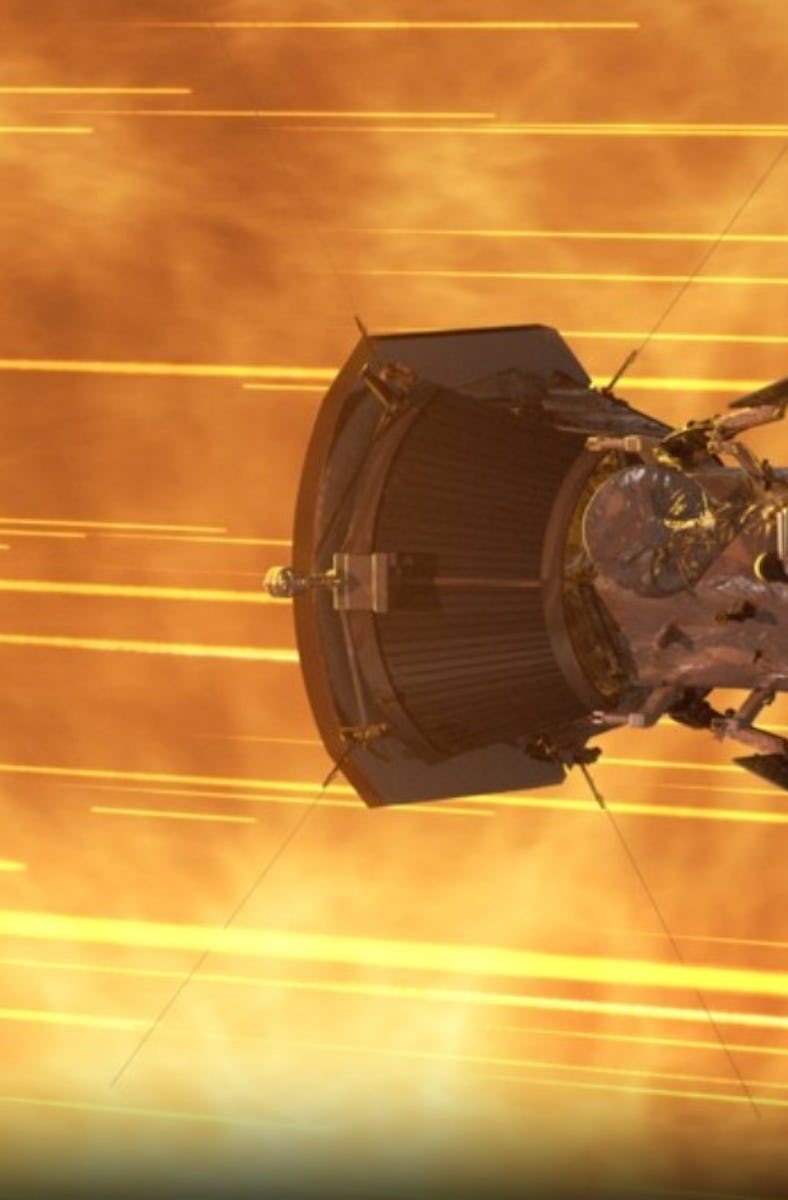NASA’s Sun-Kissing Mission Stuns Yet Again With Incredible New Footage
A video from NASA’s Parker Solar Probe shows how space dust gets blasted away after a solar eruption.

Earlier this month, a NASA spacecraft captured a never-before-seen display near the Sun.
In a blog post published on Friday, the space agency shared a video of a solar explosion having a peculiar effect on its environment. The blast, known as a coronal mass ejection (CME), is a type of event thought to have repercussions throughout the Solar System. One specific consequence revealed for the first time in new footage obtained on September 5 with NASA’s Parker Solar Probe, is that a CME can clear out interplanetary dust.
CMEs and interplanetary dust are each interesting on their own. But this is the first time that scientists have found a direct connection between the eruption and the subsequent dispersal of dust. “These interactions between CMEs and dust were theorized two decades ago, but had not been observed until Parker Solar Probe,” Guillermo Stenborg, an astrophysicist at the Johns Hopkins Applied Physics Laboratory (APL) in Maryland, shared in the blog post. (APL built and operates the spacecraft for NASA.)
Footage from Parker Solar Probe’s Wide Field Imagery for Solar Probe (WISPR) camera.
What is interplanetary dust?
Our local region in outer space is filled with a dust cloud made up of debris from planets, comets, and asteroids. Similar to the particles that appear suspended midair when a beam of sunlight pours in through a house window, interplanetary dust reflects light. When the mission team looked at the spacecraft’s footage, they caught the CME’s dramatic flash followed by a dip in the background glow, indicating that the dust had been blown away.
And despite getting blasted millions of miles from the Sun, fresh dust then quickly flooded in to replace it, the footage shows.
“The CME displaced the dust all the way out to about 6 million miles from the Sun — about one-sixth of the distance between the Sun and Mercury — but it was replenished almost immediately by the interplanetary dust floating through the solar system,” according to the blog post.
Why has this never been seen before?
The Parker Solar Probe holds the record for the closest solar approach of any spacecraft. Its sun-kissing capabilities pave the way for science that researchers couldn’t attain before.
“In-situ observations from Parker were critical to this discovery because characterizing dust dynamics in the wake of CMEs is challenging from a distance,” according to the blog post.
Since it launched five years ago, the spacecraft has obtained a series of observations of the solar environment. That helped astronomers to figure out what they were seeing in the footage and to discern when light comes from solar activity or when it’s actually just dust reflecting light. Data from the spacecraft’s four prior trips near the Sun, when it was at the same distance from the star as it was on September 5, helped the team conclude that they were seeing interplanetary dust get pushed away by the CME.
Why does it matter?
“Studying the physics behind this interaction may have implications for space weather prediction,” according to the blog post.
By better understanding how the Sun mingles with the debris floating around the Solar System, scientists hope to make better predictions about space weather. Getting a better heads-up on possible satellite or communications disruptions, power blackouts, and aurora displays all starts when researchers unpack space relationships and when ground-breaking technology makes new solar discoveries.